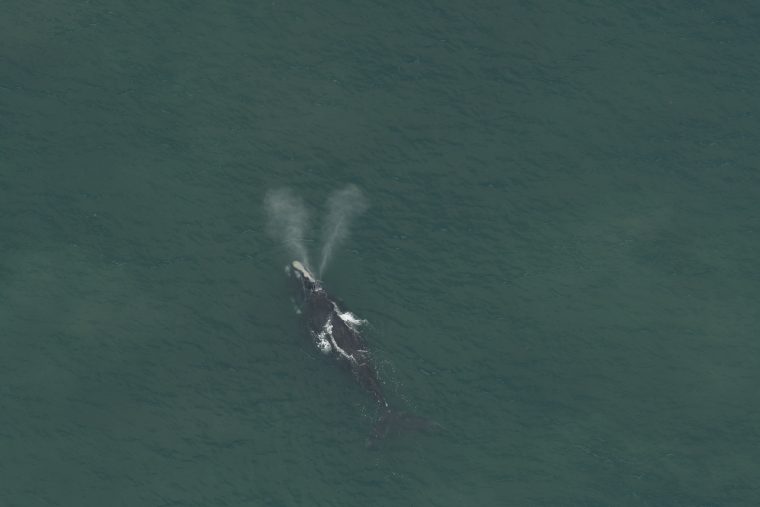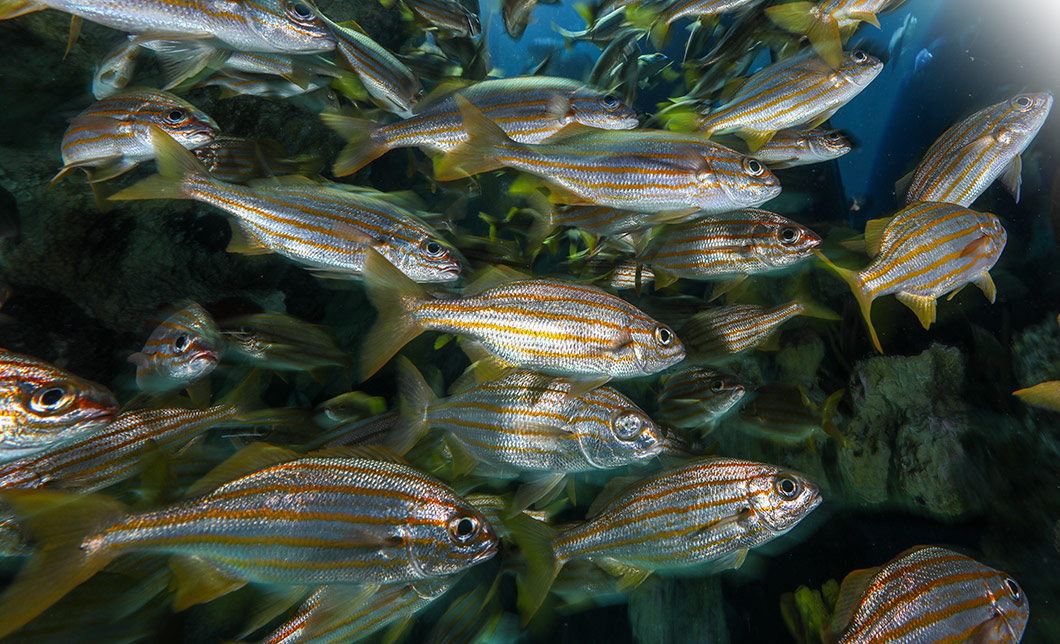We will be closed on Tuesday, April 30, for a day of strategy work and team building.
The New Balance Foundation Marine Mammal Center will be closed for exhibit maintenance on Monday, April 29 and Wednesday, May 1.
For first time in 40 years, Aquarium scientists did not see any whales during their Bay of Fundy field season but several spotted south of Cape Cod

BOSTON, MASS. (October 8, 2020) — After 40 years of observing North Atlantic right whales during the summer months in the Bay of Fundy on the Maine-Canadian border, scientists from the Anderson Cabot Center for Ocean Life at the New England Aquarium did not see any of the critically endangered whales, a clear indication that the whales’ feeding habitats are continuing to shift as the Gulf of Maine warms.
Further south, another team of Aquarium scientists completed an aerial survey in late September around Martha’s Vineyard and Nantucket where they saw six right whales. The whales were seen in a “Dynamic Management Area,” (DMA) which is a voluntary slow-down zone for vessel traffic in areas where right whales have been seen recently in order to protect the endangered species. DMAs end after 15 days if right whales are not seen again, and this area was set to expire in early October. As a result of the Aquarium’s survey, which was funded by Massachusetts Clean Energy Center, vessels in the area will continue to be asked to reduce their speeds to less than 10 knots until Oct. 20 to protect these animals.
“The past several years, the New England Aquarium aerial survey has started to document an increased use of southern New England waters by right whales, including sightings in the summer and fall,” said Orla O’Brien, an Aquarium Assistant Scientist. “This season, we sighted our first right whale in late July, and along with our partners at NOAA (National Oceanic and Atmospheric Administration) have continued to monitor a small but consistent group of animals over the Nantucket Shoals since then.”
About five years ago, O’Brien said they would see right whales only in the winter and spring in that southern New England area. Since 2017, they have been seeing more there in the summer and fall. Typically, right whales would migrate into the Bay of Fundy near Lubec, Maine in July through September. However, in the last decade, sightings in the Bay have decreased and become more sporadic.
This August and September, the Aquarium’s Right Whale team spent six weeks surveying the Bay of Fundy for right whales, departing from Lubec on the Aquarium’s research vessel Nereid when there was good weather. But, for the first time in 40 years, they did not see any right whales, and only two were photographed by others operating in the area. They did, however, see many other species including at least 50 individual humpback whales, a male killer whale named “Old Thom” on two different days, six leatherbacks sea turtles, including three on one day, which is a record, and a pod of eight common dolphins, rarely seen in that habitat. They also spotted numerous harbor porpoise, white sided dolphins, fin whales, minke whales, ocean sunfish, tuna, basking sharks, grey seals, harbor seals, Atlantic white-sided dolphins, and blue sharks.
“Despite the lack of right whales, we were encouraged to see the Bay thriving with the presence of so many different species,” said Amy Knowlton, Senior Scientist with the Aquarium who lead this year’s Bay of Fundy surveys. “Our 40 years of surveys in this habitat contribute to many other studies on both species presence and distribution and the effects of changing oceanographic conditions.”
Prior to 2010, more than 100 right whales would usually be seen in the Bay. Now, about one-third of the 411 known living North Atlantic right whales are going to the Gulf of St. Lawrence in the summer, said Philip Hamilton, the Aquarium’s Research Scientist who manages the North Atlantic Right Whale Catalog. The team is unsure where the other two-thirds of the population feeds during this time. It is not uncommon for the numbers to rise and fall year to year so that they see fewer whales one season, only to see many more the following year. In fact, even though no right whales were spotted in late summer, a colleague spotted a yearling in July off Eastport, Maine and an adult male was seen in August near Brier Island, Nova Scotia. “These two right whales—sighted by others—show that at least a few whales visited the Bay this summer, but likely only to determine if there was adequate food and then move on to look elsewhere,” Hamilton said.
The Gulf of Maine is one of the most rapidly warming bodies of water in the world as the result of climate change. These warming ocean temperatures are impacting distributions of the whales’ primary food source, copepods, which, in turn, contributes to the changing distribution of the right whale population. Shifting patterns make it increasingly hard to predict where protections will best help right whales. Therefore, expanding the location and duration of protection measures will be essential for improving the situation for this critically endangered species.
Here are photo links from aerial surveys in southern New England, sponsored by MassCEC and the Bureau of Ocean Energy Management: https://neaq-my.sharepoint.com/:f:/g/personal/oobrien_neaq_org/EhsNjCDW4SxNiP902PzqexkBFz156AdKKvySj16Xsi9E4Q?e=KTTXoY
MEDIA CONTACT:
Pam Bechtold Snyder, psnyder@neaq.org; 617-686-5068

